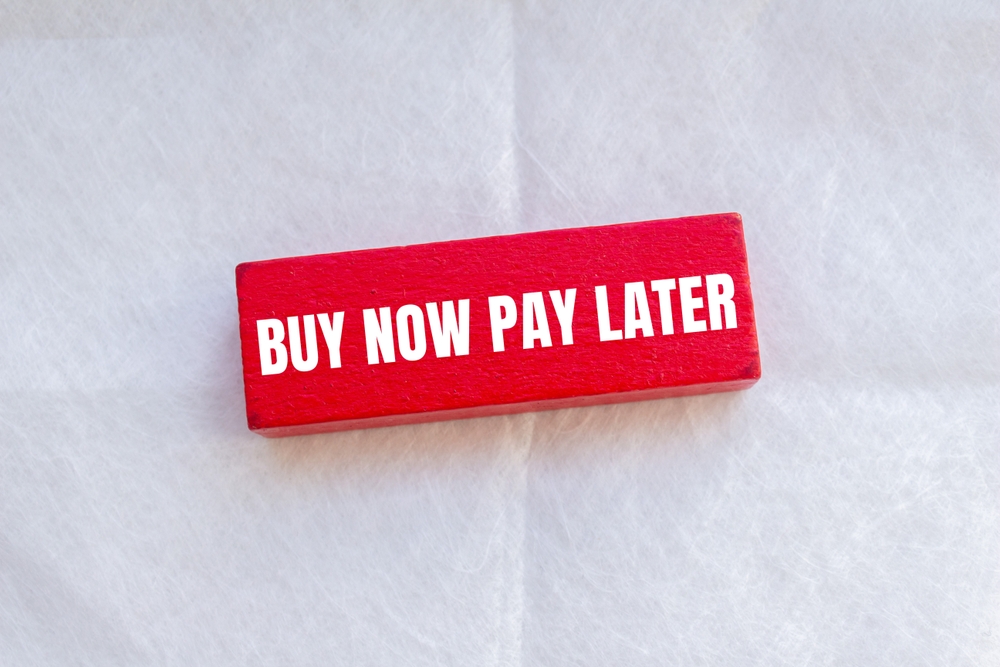
It is that time of year when eCommerce companies around the world are rolling out their biggest deals of the year, promising discounts too good to ignore. Black Friday, White Friday and the holiday season sales and discounts are here. From sleek gadgets to wardrobe upgrades, the allure of slashed prices and exclusive offers has millions bracing for the shopping frenzy. Chances are, you’ve been preparing your wish list for weeks and now your credit cards are at the ready!
Consider this. You’re scrolling through your phone, looking for nothing in particular, when a notification pops up: “Limited time offer – 70% off!” Your heart skips a beat and it feels like a once-in-a-lifetime deal. Before you know it, you’ve hit the ‘Add to Cart’ or even better, “Buy Now”. But then, the promise of your package arriving the next day and the thrill of the purchase fades almost as quickly as it began. Three months later, the unopened package sits in a closet, forgotten.
This moment, familiar to so many, is no accident. It is the result of an intricate web of psychological manipulation, relentless advertising, and cutting-edge technology designed to exploit human vulnerabilities.
Beyond the flashing banners and countdown clocks lies a deeper story. These mega-sales aren’t just about bargains—they’re the result of meticulously crafted strategies designed to make us buy more than we need, faster than ever before. As the excitement builds, it’s worth asking: are these sales a celebration of smart shopping, or are we being swept into a carefully orchestrated consumer trap?
Welcome to the “Buy Now” culture, a system engineered to turn convenience into compulsion and leave consumers questioning their own choices.
From Catalogues to Clicks: Shopping in Overdrive
Shopping wasn’t always so impulsive. In the early 20th century, buying decisions were deliberate. People flipped through catalogues, planned trips to physical stores, and made purchases based on genuine needs. Overconsumption wasn’t the norm. It was the exception.
Then the digital revolution changed everything. ecommerce giants like Amazon, Noon, Shein, and Temu made shopping seamless. Events like Black Friday and Amazon Prime Day evolved from occasional splurges into global spectacles, running multiple times a year. Flash sales, one-click checkouts, hyper-personalized ads, irresistible discount schemes and spin-the-wheel gimmics transformed shopping into a reflexive, year-round activity.
According to Statistica, the UAE’s eCommerce market is expected to reach US$6.98 billion this year. It is expected to show an annual growth of 8.62 percent between 2024- 2029, resulting in a market volume of a whopping US$10.56 billion by 2029.
Why You Can’t Stop Clicking
As every innovation today is designed to reduce friction in buying, the culture of consumption has reached a fever pitch. Marketing has become a sophisticated science, leveraging human psychology to drive compulsive buying. Here’s how they do it.
Through Scarcity and FOMO (Fear of Missing Out): Creating Limited-time offers and phrases like “Only 3 left in stock!” are crafted to trigger urgency. When faced with the possibility of missing out, rational decision-making takes a backseat.
Through Emotional Manipulation: From heartwarming ads featuring children to glamorous influencer lifestyles, marketing ties products to feelings of joy, success, and love. It’s no longer just a purchase, it’s an aspiration.

Creating the Illusion of Guilt-Free Spending: “Buy Now, Pay Later” (BNPL) schemes are the perfect medium to lure consumers with promises of affordability. Yet studies reveal that these models often lead to mounting debt, particularly among younger shoppers.
The Corporate Playbook: Waste, Deception, and Dependency
Corporations are relentless in their pursuit of profits, employing sophisticated strategies that manipulate consumers while often ignoring ethical or environmental concerns. Behind the scenes, corporations employ strategies that prioritize profit over sustainability or ethics
Planned Obsolescence: You may wonder, what this is. Products, from smartphones to appliances, are intentionally designed to fail or seem outdated within a few years. This guarantees repeat purchases, even at the cost of environmental sustainability.
Greenwashing: This one is expecially for the buyers who value sustainable brands and products. But oftentimes, buzzwords like “sustainable” or “biodegradable” often lack substance. Greenwashing is a significant issue in the fashion industry, with several major brands being called out or investigated for misleading environmental claims. The Changing Markets Foundation released a report titled “Synthetics Anonymous: Fashion brands’ addiction to fossil fuels”. The report studied 50 global fashion brands, ranging from high-end to mainstream, and found that 60% of fashion companies are engaging in greenwashing practices, and were misleading customers. It is true, that many brands exploit eco-conscious consumers while maintaining unsustainable production practices.
Corporate Waste: How many of us know about this? Can you imagine your favorite brands just destroying or burning products you would pay a fortune to acquire? Investigative reports have exposed luxury brands destroying unsold inventory to maintain exclusivity. In 2018, Burberry admitted to burning £28.6 million worth of unsold goods, simply to protect its brand. Many luxury fashion firms destroy unwanted items to prevent them from being stolen or cheaply sold. Such practices reflect the industry’s prioritization of image over responsibility.
Psychological Pricing: Charm pricing where items are priced at AED9.99 instead of AED10—plays on our subconscious tendency to perceive lower numbers as better value. The anchoring effect, displaying inflated “original prices” alongside discounted ones, further exploits this psychology. Online retailers often inflate prices to make discounts seem steeper, creating false urgency.
Loyalty Programs and Ecosystem Lock-In: Programs like Amazon Prime combine free shipping, exclusive deals, and streaming services to keep consumers engaged year-round. Similarly, tech giants like Apple ensure their products work best within their own ecosystem, discouraging consumers from switching brands.
Data Monetization: Companies sell consumer data to third parties, fueling even more targeted marketing. Have you ever wondered why you see product recommendations titled ‘For you’ on your popular social media channels? Dynamic pricing based on browsing history or perceived willingness to pay maximizes corporate profits. Airlines and e-commerce platforms are notorious for adjusting prices based on user behavior.
Subscription Models and Gamification: Subscriptions for streaming services or meal kits create dependency, while gamification using streaks or countdown timers makes purchasing feel like winning a game.
Targeting Marginalized Groups: BNPL schemes and fast fashion marketing disproportionately impact low-income groups and teens, normalizing debt and creating unsustainable habits from a young age.
Excessive Packaging: Companies often ship small items in oversized boxes filled with plastic, or paper contributing to environmental waste. Amazon has often been criticized for over-packaging, undermining its claims of sustainability.
Exploitation in Supply Chains: Fast fashion and tech industries rely on underpaid labor in developing countries. Documentaries like ‘The True Cost’(2015) highlight the devastating human cost behind cheap consumer goods, from poor wages to unsafe working conditions.
The Costs You Don’t See
The “Buy Now” culture doesn’t just empty wallets—it impacts mental health, financial stability, and the planet.
The dopamine hit of a new purchase fades quickly, often replaced by guilt. Compulsive buying behaviors linked to anxiety and depression, are on the rise globally. BNPL users often struggle to meet repayment deadlines. Easy access to credit has turned minor purchases into long-term financial burdens. Fast fashion generates millions of tonnes of textile waste annually, and most of it ends up in landfills, releasing toxic chemicals. E-commerce returns are often discarded rather than resold, exacerbating waste and resource depletion.
BreakFree and take control of your choices
Escaping the “Buy Now” culture requires effort, awareness, and intentional change. Here’s how you can start:
1. Pause before you buy: Ask yourself, ‘Do I truly need this? Or am I being influenced by clever marketing?’ Oftentimes, your mind will justify your need. Hence, you must make a conscious effort to take that pause.
2. Support ethical brands: Look for brands with transparent sustainability practices and certifications.
3. Set Spending Boundaries: Stay away from those BNPL schemes and turn to budgeting apps like YNAB or Mint. These can help track expenses and prevent impulse buys, or you can also keep a simple excel sheet if apps are not your thing.
4. Educate Yourself: Learn about greenwashing and how marketing exploits psychological vulnerabilities.
5. Advocate for Transparency: Push for stricter regulations on misleading advertising, corporate waste, and privacy violations.
The role of governments in regulation
Advocacy and collective pressure are key to driving meaningful change in these areas.
Governments are beginning to take notice, but progress is slow. The UK’s Competition and Markets Authority has introduced guidelines to penalize false environmental claims, while Europe’s GDPR is a step forward in limiting corporate exploitation of personal data, though enforcement remains inconsistent. The UAE Customs authorities have on many occasions, confiscated millions of dollars worth of counterfeit goods, emphasizing their commitment to thwarting attempts to introduce counterfeit goods in the UAE.
Is there a future beyond consumerism?
The “Buy Now” culture thrives on impulsivity, convenience, and a lack of awareness. But informed consumers have the power to disrupt this cycle. By questioning our buying habits, supporting ethical practices, and demanding accountability from corporations, we can reshape the marketplace into one that values ethics over excess.
Every purchase is more than a transaction—it’s a choice about the kind of world we want to create. The next time a flash sale or influencer pitch tempts you, remember: the true cost of convenience might be far greater than the price tag.



